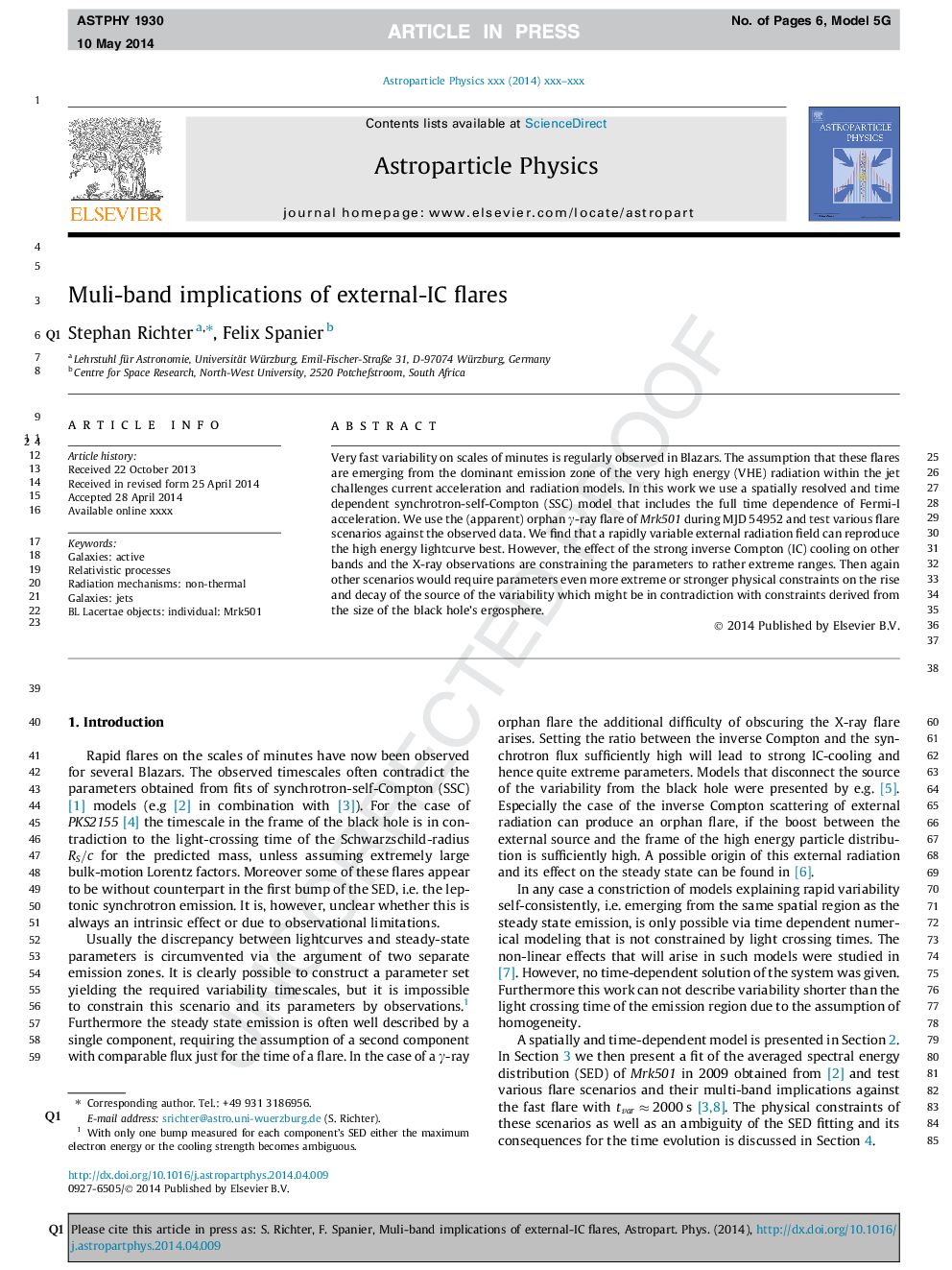| Article ID | Journal | Published Year | Pages | File Type |
|---|---|---|---|---|
| 1770654 | Astroparticle Physics | 2015 | 6 Pages |
Abstract
Very fast variability on scales of minutes is regularly observed in Blazars. The assumption that these flares are emerging from the dominant emission zone of the very high energy (VHE) radiation within the jet challenges current acceleration and radiation models. In this work we use a spatially resolved and time dependent synchrotron-self-Compton (SSC) model that includes the full time dependence of Fermi-I acceleration. We use the (apparent) orphan γ-ray flare of Mrk501 during MJD 54952 and test various flare scenarios against the observed data. We find that a rapidly variable external radiation field can reproduce the high energy lightcurve best. However, the effect of the strong inverse Compton (IC) cooling on other bands and the X-ray observations are constraining the parameters to rather extreme ranges. Then again other scenarios would require parameters even more extreme or stronger physical constraints on the rise and decay of the source of the variability which might be in contradiction with constraints derived from the size of the black hole's ergosphere.
Related Topics
Physical Sciences and Engineering
Physics and Astronomy
Astronomy and Astrophysics
Authors
Stephan Richter, Felix Spanier,
